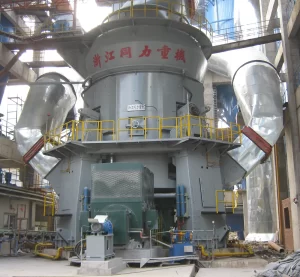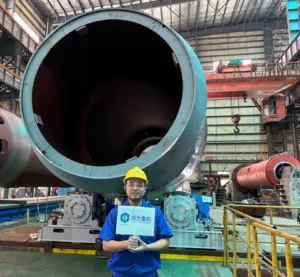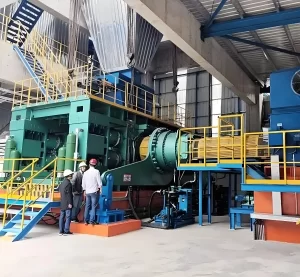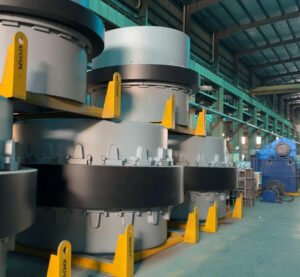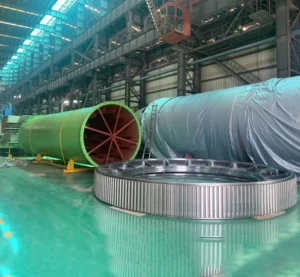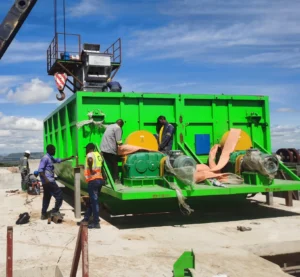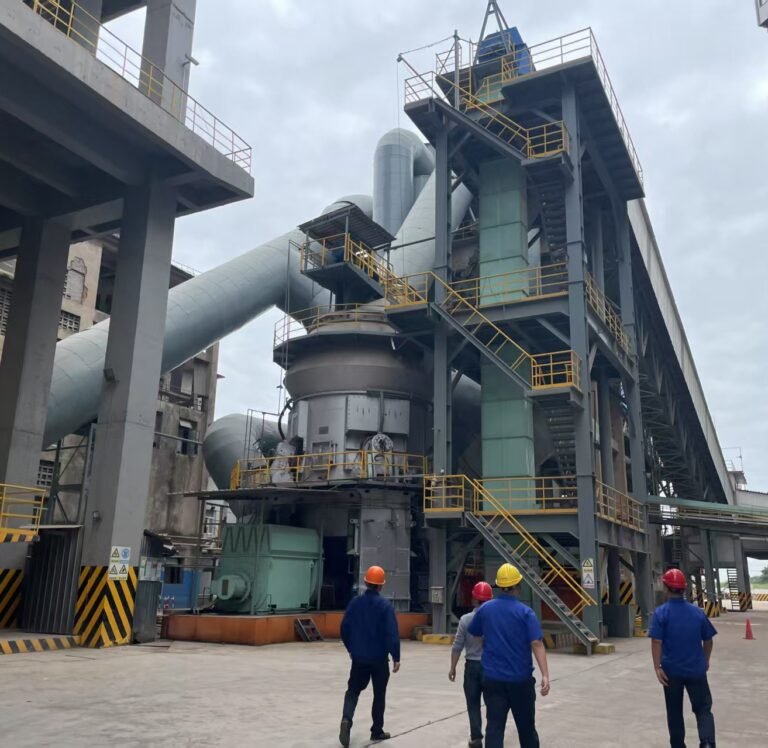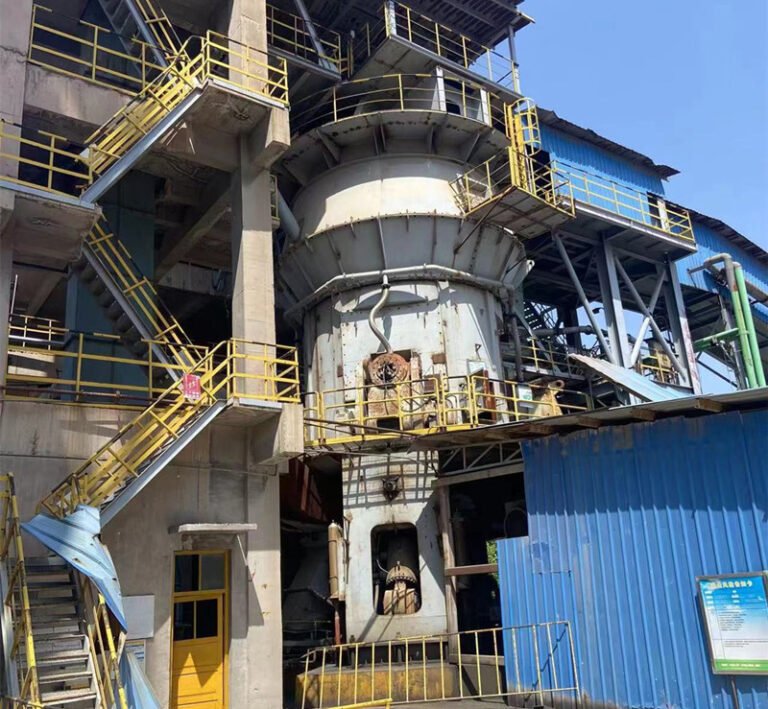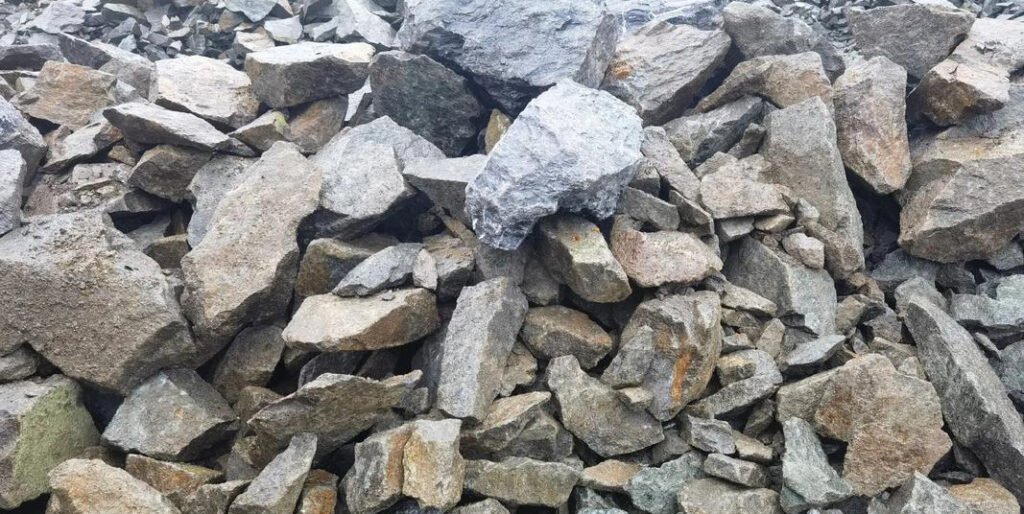
Cement is a basic material for construction. It is composed of a variety of natural substances. Its production is highly dependent on natural mineral resources and industrial waste. In this article, we will introduce the key raw materials involved in cement production, including limestone, clay, gypsum and other ingredients, technical requirements and source distribution, and explore the application potential and process of industrial solid waste as an alternative raw material. Cement is an indispensable basic material for building modern civilization, with an annual global production of more than 4 billion tons. Its production is essentially the grinding and calcination of natural or artificial raw materials rich in calcium, silicon, aluminum and iron to form hydraulic silicate minerals (mainly tricalcium silicate C3S and dicalcium silicate C2S). The quality, availability and cost of raw materials directly determine the performance, production efficiency and environmental footprint of cement. In the context of global promotion of carbon neutrality and resource recycling, the structure of cement raw materials is undergoing profound changes. The raw materials for cement production are crucial to determining the quality and characteristics of cement. Understanding these raw materials helps to understand how cement helps to build durable structures. Let's explore the basics of cement raw materials and their role in the production process.
Traditional main raw materials of cement
Limestone (provides lime content)
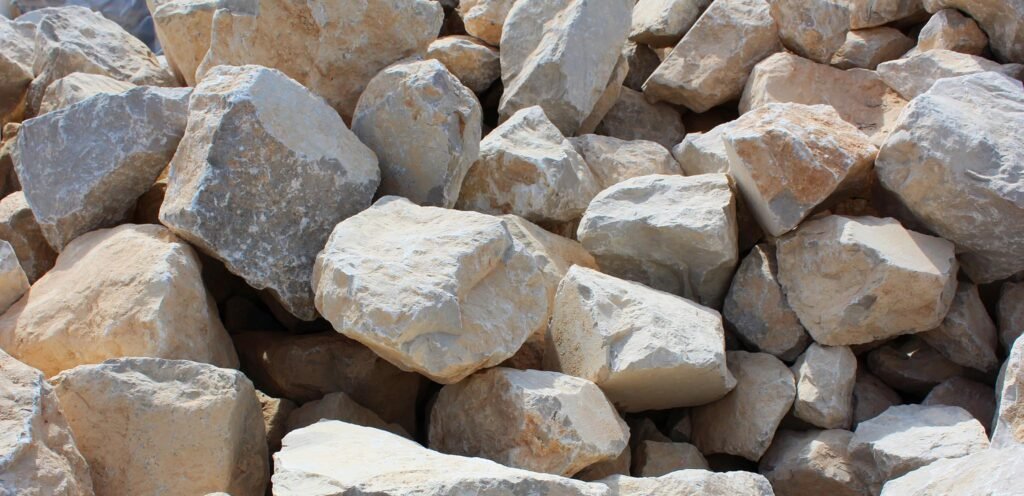
Limestone is the super raw material for the cement industry, accounting for 70% to 80% of the cement mix. It is rich in calcium carbonate (CaCO3), which acts as a "glue" during the clinker formation process, binding other materials together. Calcium carbonate (CaCO3) is widely distributed in nature. Calcium carbonate in all geological formations can be used to produce Portland cement. The purest forms of limestone are calcite and aragonite. Calcite has a hexagonal crystal system, while aragonite has a rhombohedral crystal system. The specific gravity of calcite is 2.7 and that of aragonite is 2.95. Marble is a macroscopic granular variant of calcite. It is not economical to use marble to produce cement. The most common forms of calcium carbonate are limestone and chalk, which is most similar to marble. Limestone has a mainly fine-grained crystalline structure. The hardness of limestone depends on its geological age; generally, the older the geological formation, the harder the limestone. The hardness of limestone ranges from 1.8 to 3.0 on the Mohs scale; its specific gravity ranges from 2.6 to 2.8. Only the purest limestone is white. Limestone often contains a mixture of clay materials or iron compounds, which can affect its color.
Processing methods:
- Quarried from mines using controlled blasting.
- Crushed into a fine powder and mixed with other materials.
- Heated in a kiln to form clinker (the basis of cement).
Chalk (provides lime component)
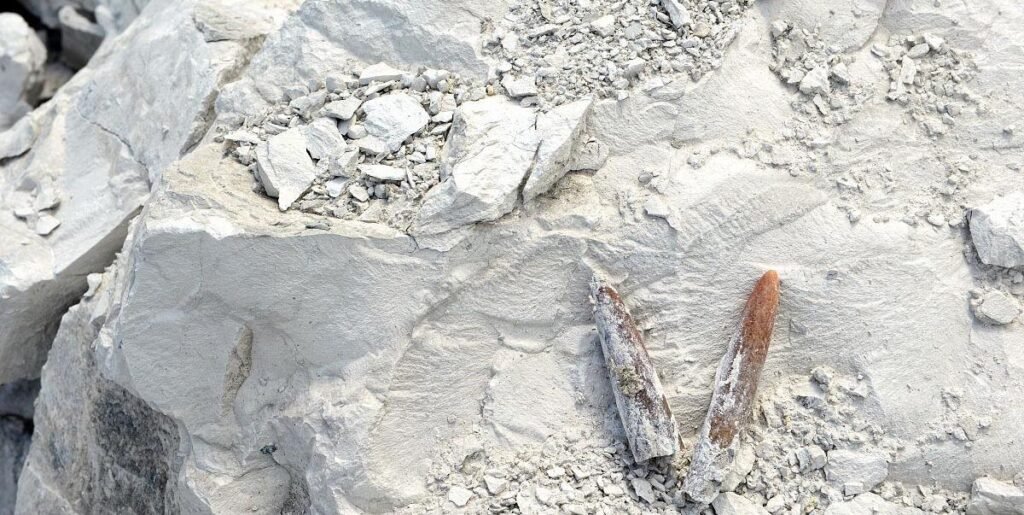
Chalk is a sedimentary rock formed in the Cretaceous period of geological history; from a geological point of view, it has a soft, earthy texture compared to limestone; this property makes chalk very suitable as a raw material for wet cement production. Since chalk mining does not require blasting and does not require a crushing process, this raw material significantly reduces the cost of cement production. In some deposits, chalk has a calcium carbonate content of up to 98-99%, with small amounts of SiO2, Al2O3 and MgCO3.
The lime content of cement raw materials is usually as high as 76-80%. Therefore, the chemical and physical properties of lime have a decisive influence on the choice of cement production method and type of production machinery.
Marl (provides lime component)
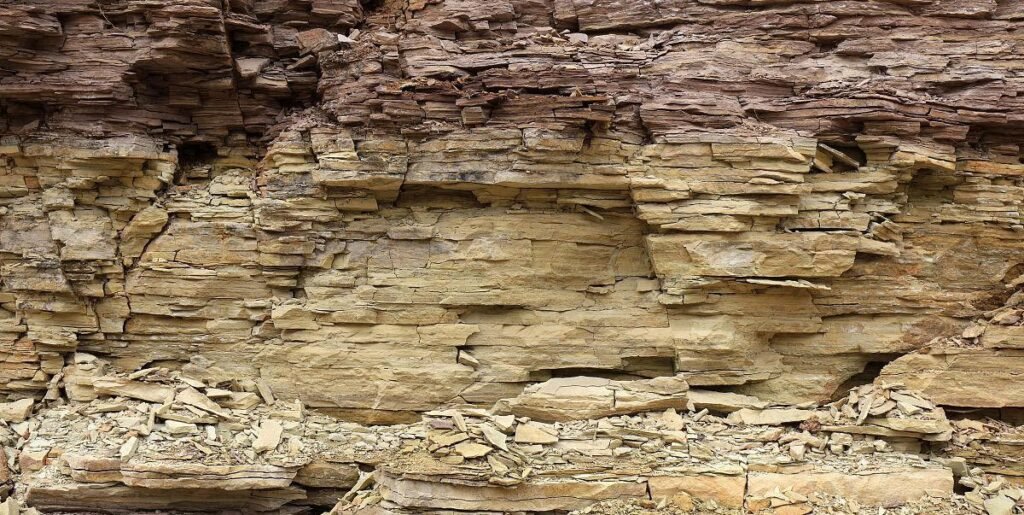
Limestones containing silica, clay matter, and iron oxide are called marls. Marls are transitional elements to clay. Due to their widespread distribution, marls are often used as raw materials for cement production. From a geological point of view, marls are sedimentary rocks formed by the simultaneous deposition of calcium carbonate and clay matter. Marls are less hard than limestones; the higher the clay content, the lower the hardness. Sometimes marls also contain bituminous components. The color of marls depends on the clay matter and ranges from yellow to gray-black. Marls are excellent raw materials for cement production because they contain a homogeneous mixture of lime and clay. Calcareous marls with the same chemical composition as the raw material mixture of Portland cement can be used to produce so-called natural cement; however, deposits of such raw materials are not common.
Clay or Shale Raw Materials
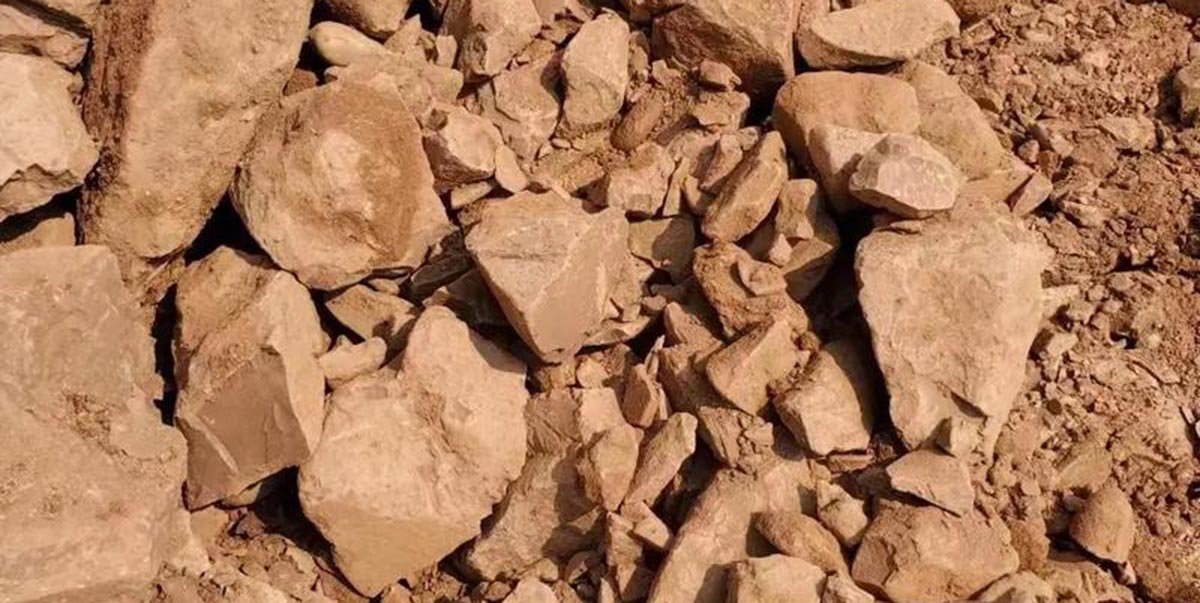
Another important raw material for cement manufacturing is clay. Clay is formed by the weathering of alkaline earth metals containing aluminum silicates and their chemical transformation products (mainly feldspar and mica). The main components of clay are hydrated aluminum silicates. Clay and shale add silica (SiO2) and aluminum oxide (Al2O3). These elements react with limestone to form calcium silicate, which gives cement its strength. Clay is 30% to 40% of cement. It is also used in cement and concrete as an SCM (Supplementary Cementitious Material). It can improve strength and durability overall. It also reduces carbon dioxide (CO2) emissions. Clay contains a mixture of silicon dioxide (SiO₂), aluminum oxide (Al₂O₃) and iron oxide (Fe₂O₃). Therefore, it helps to provide the required silica and aluminum oxide in cement. To ensure that the process is carried out efficiently, the moisture content of the clay should be as low as possible. Clay is essential for the formation of the cement clinker phase. Shale is similar to clay and can be used as an alternative material. Shale is composed of clay minerals, quartz and organic matter, which provide combined strength. It is widely used in the formation of clinker. Shale is an alternative source of silica and alumina. Shale is needed in the cement manufacturing process.
Why it is important:
- Too little silica = slow setting time.
- Too much alumina = fast hardening (not suitable for large projects).
Silica correction raw materials (to increase the silicon content of raw materials SM)
Silica correction raw materials are used when the silica content of clay raw materials is low. Common raw materials: sandstone, river sand, diatomite, opal, volcanic ash, etc. High SiO2 content (≥80%) and low alkali content are required. The other main raw material of cement is silica sand, which can add more silica to cement, accounting for about 5-10% of the cement mixture. Silica sand is the element that hardens cement, making it strong and durable.
Iron correction raw materials (providing Fe2O3)
If the content of iron raw materials in the cement raw material mixture is insufficient, a corrector needs to be added. Common raw materials: low-grade iron ore (such as pyrite slag/cinder), iron smelting plant tailings, industrial sulfuric acid slag (Fe2O3 content is usually 30-70%). The Fe2O3 content is required to be stable.
Auxiliary components of cement raw materials
Magnesium oxide
This component can be present up to 2% by weight of the main clinker phase; above this level it is present in the clinker as free MgO (periclite). clase reacts with water to form Mg(OH)z: MgO + H20 =Mg(OH)z, but this reaction proceeds slowly while other hardening reactions are already complete. Since Mg(OH)z occupies a larger volume than MgO and forms in the same location as periclase particles, it may break the bond of the hardened cement paste, causing expansion cracks (magnesium oxide expansion).
MgO is found in limestone mainly as dolomite (CaC03·MgC03). Blast furnace slag sometimes also contains significant amounts of MgO. When such slag is selected as a clayey component of the raw meal instead of clay, care should be taken to keep the MgO content in the clinker within the permitted range.
Alkali
K20 and Na20 originate from raw materials such as clay and marl. These compounds are present in finely dispersed particles of feldspar, mica and illite; when coal is used as fuel, small amounts of K20 and Na20 are also present in the fly ash [139, 245, 7a]. In Central Europe, the K20 content is several times that of Na20. In other regions, such as the United States, the Na2O content is dominant. During the combustion process in the rotary kiln, part of the alkali evaporates in the combustion zone, forming the so-called alkali cycle.
Some concrete aggregates, such as those found in the United States, Denmark and some parts of northern Germany, contain alkali-sensitive components, such as opal (hydrated silica), which react with the alkalis in the cement and, under certain unfavorable conditions, lead to swelling phenomena (alkali expansion). As a rule of thumb, alkali expansion can be prevented by using cements with a low alkali content; in this case, the total alkali calculated as Na2O (% wt Na2O + 0.659% K2O) should not exceed 0.6% wt. Germany also stipulates a limit of 0.6% Na2O equivalent, but only for Portland cement. Practical experience shows that for blast furnace slag cements, the permissible alkali content limit can be higher; thus, the maximum alkali content of "low active alkali cement (NA cement)" with a slag content of at least 50% can be 0.9%. In addition, for cements with a slag content of at least 65%, the maximum limit for the total alkali content is 2%.
If alkali-free cement is required, but the alkali content of the clinker from the available raw materials exceeds the permissible limit, part of the kiln off-gas must be bypassed before entering the preheater to remove part of the volatile alkali.
It is important to note that Federal Specification SS-C-192 b, AASHO Specification, and ASTM Specification all specify an optional 0.6% Na2O content in Portland cement. This means that the customer must specify that the alkali content required is below this limit, otherwise the alkali content is unlimited. This limit can be specified when the cement is used in concrete and the aggregate may have harmful reactivity. However, since low-alkali cement and high-alkali cement are difficult to distinguish, it has become common practice in many parts of the United States that all cements should meet the low-alkali specification;
Sulfur
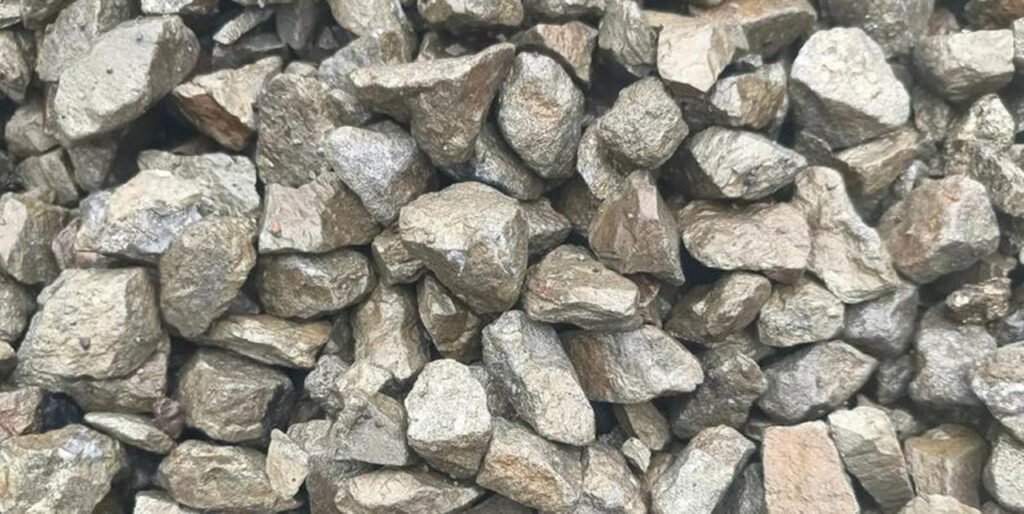
Almost all cement raw materials contain sulfur, mainly in the form of sulfides (pyrite and marcasite, FeS2). A survey of more than 90 German limestone deposits showed a total sulfur content (sulfide and sulfate compounds) of up to 0.16%, and an examination of 67 clay deposits showed an average sulfur content of 0.22%. The sulfur content of fuels varies widely, from zero in natural gas to about 3.5% in heavy fuel oil. Coal from the Ruhr Basin (western Germany) has an average sulfur content of 1.1%. A survey of 21 German preheating kilns showed that the sulfur content introduced with the raw meal mix varied from 0.5 to 11 g SO3/kg clinker, while when using fuel oils with a very high sulfur content, the sulfur content introduced with the fuel was up to 6 g SO3/kg clinker.
After combustion, the sulfur in the raw meal and fuel evaporates in the firing zone to form sulfur dioxide, which combines with alkali and oxygen in the kiln atmosphere to form gasified alkaline sulfates, which condense on the raw meal particles in the cooler kiln zone and in the preheater. The alkaline sulfates return to the firing zone with the kiln charge, except for a small part that is carried away with the kiln dust, and leave the kiln with the clinker due to their low volatility. If the sulfur dioxide content is insufficient to bind all the alkali metals, medium-volatile alkali carbonates or high-volatile alkali chlorides will begin to circulate. As long as the alkali carbonates are not bound to the clinker phase, they evaporate again in the firing zone. In the preheater, excess sulfur dioxide is able to react with calcium carbonate and return to the kiln in the form of calcium sulfate. In the firing zone, sulfur dioxide is then decomposed again, thereby increasing the amount of sulfur dioxide circulating in the kiln gas. However, a part of the sulfur dioxide will still be present in the clinker in the form of undecomposed calcium sulfate. The alkali content in the raw meal exceeds the amount of sulfur already bound to it, so that high-sulfur fuels can be used without emitting large amounts of sulfur dioxide in the kiln tail gas. The alkaline sulfates bound in the clinker are beneficial to the early strength of cement. On the other hand, higher sulfur contents lead to increased sulfur dioxide emissions with the gas, clogging of the suspension preheater, and the formation of a coating ring at the kiln tail.
In order to control the setting time, cement requires the addition of a certain amount of calcium sulfate, which is usually added to the clinker in the form of gypsum. On the other hand, in order to prevent "sulfate expansion", the maximum S03 content allowed in cement is determined according to various cement standards and is between 2.5% and 4%. There may not be enough room for extensive sulfation of alkalis at the minimum limits prescribed by the cement standard specification.
Chlorides
The chloride content of cement raw meal generally fluctuates between 0.01% and 0.1% by weight, sometimes rarely exceeding 0.3%. As mentioned above, the chlorides react with the alkali metals in the rotary kiln to form alkali chlorides, which leave the rotary kiln with the gases and condense in the preheater. They return to the kiln with the raw meal, but, unlike the alkali sulfates, they evaporate almost completely in the firing zone. Since they condense quantitatively in the preheater, they circulate between the firing zone and the preheater until the buildup of cover requires stopping the kiln. To prevent this, part of the kiln gas (up to 10% or 25%) is bypassed and does not enter the preheater. Practice has shown that bypassing the kiln gas is necessary when the chloride content in the raw meal exceeds 0.015% Cl. Previously, calcium chloride was added to high early strength cement to increase the initial strength of cement. However, chlorides appear to promote corrosion of the reinforcement and thus have a negative effect on the tensioning wires in prestressed concrete. Therefore, the German cement standard specification DIN 1164, revised in 1970, does not allow the addition of chlorides to cement. However, trace amounts of up to 0.1% Cl are permitted in cement if the chlorides come from the raw materials.
Fluoride
The fluoride content of conventional cement raw materials fluctuates between 0.3% and 0.08%. Unlike chlorides, fluorides are not volatile and therefore do not interfere with production operations, as they do not circulate in the cement kiln system. Previously, about 1% calcium fluoride was added to the raw meal to promote the burning of the clinker, but this has been abandoned in most cases because the incorporation of lime can be achieved through more uniform mixing and finer grinding of the raw meal.
Phosphorus
The phosphorus content of commonly used natural cement raw materials is low; in Germany, the content of P205 in clinker ranges from about 0.5% to 0.25%. When raw materials with a high phosphorus content are used (e.g. limestone with a high P205 content or industrial waste from phosphorus production), the permissible P205 content in clinker is around 2.5%. However, it should be noted that sometimes a P205 content as low as 0.5% can lead to a significant reduction in cement strength, especially in early strength.
Cement alternative raw materials and resource utilization of industrial solid waste
Faced with resource constraints and environmental pressure, the use of industrial solid waste to replace some natural raw materials has become a core strategy for the green development of the cement industry. In recent years, cement production has successfully used a variety of wastes and by-products as supplementary raw materials. These materials usually include lime-containing carbonates, paper sludge, lime waste from water treatment plants, sludge from sugar and fertilizer industries; slag from steel and other metal industries; fly ash, bottom ash and desulfurization sludge from power plants; red mud, mineral and ore tailings, catalyst fines, foundry sand; and sludge from sewage treatment plants. Some marginal raw materials are also used as substitutes.
Materials that replace calcium components
Calcitic materials are rich in lime (calcium oxide). They partially or completely replace the calcium component (limestone) in cement raw materials, mainly depending on their chemical composition and compatibility with the replacement material.
Cement Kiln Dust (CKD)
Cement kiln dust is a fine-grained material produced by cement plants, swept from the rotary kiln and collected by bag filters or electrostatic precipitators. Cement kiln dust (CKD) is usually rich in lime. Normally, all CKD that can be returned to the process is returned, unless it cannot be returned due to alkalinity considerations. In wet kilns, CKD is injected through kiln devices or even directly into the burning zone. Typically, CKD consists of partially calcined raw meal, clinker particles and alkaline compounds discharged with the kiln exhaust. Demonstration results show that although the alkali metal and chloride ion content in CKD is high, cement shows good strength and meets soundness standards. Since CKD also contains high alkali, its reuse in raw materials must be strictly controlled to avoid the production of clinker and cement with too high alkali content. For durability reasons, low-alkali cement is more suitable for concrete than high-alkali cement. Therefore, people try to separate the alkaline compounds from CKD before recycling. The following table shows the composition of CKD, mass %
| Analyte | SiO2 | Al203 | Cao | Fe203 | K20 | Na2O | MgO | CI- | LOI |
| Mass % | 14.89 | 4.84 | 43.18 | 1.59 | 4.36 | 0.46 | 1.74 | 2.18 | 26.44 |
In long wet kilns, it is common to inject CKD into the kiln. Since adding CKD to the slurry in a wet process is counterproductive as it makes the slurry stiffer and requires large amounts of water to keep the slurry flowing, CKD is usually injected in the kiln. This practice does not affect the thermal characteristics of the kiln as the CKD will usually become part of the kiln feed.
Carbonate sludge
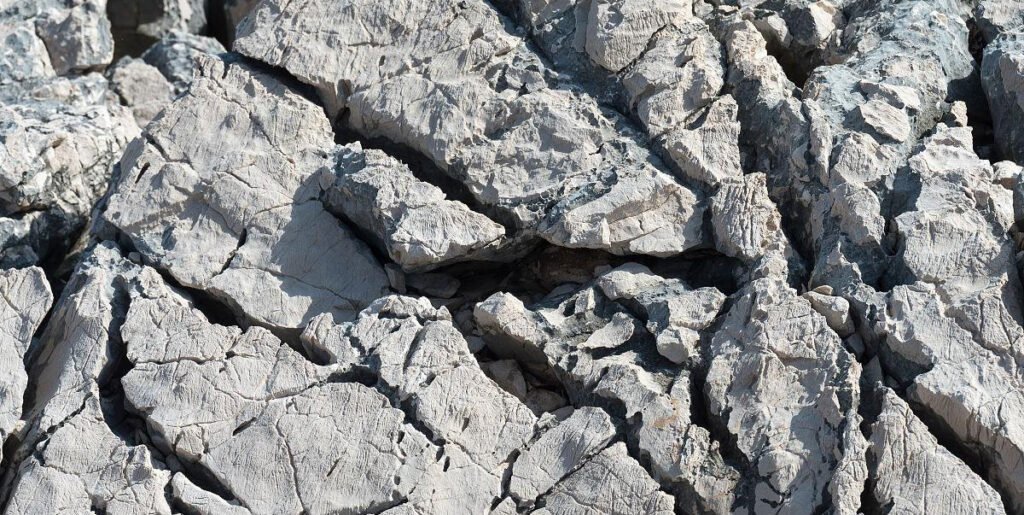
Lime-rich sludge from the fertilizer industry is used as raw material for wet cement plants. In addition to lime, the sludge contains high concentrations of sulfates (6%), fluorides (1.2%) and phosphates (1.8%). These "impurities" result in the sludge being used at only 50% of the cement kiln feed. The following table shows the composition of the sludge
| Analyte | SiO2 | Al203 | Cao | Fe2O3 | K20 | Na20 | P205 | S03 | F- | LOI |
| Mass % | 6 | 0.3 | 46.5 | 0.3 | 0.13 | 0.04 | 1.8 | 6 | 1.2 | 37.5 |
The sludge partially replaced the existing high-grade limestone in the plant. Excessive use of sludge affected the strength and setting properties of the cement, most likely due to the phosphate and fluoride content. However, this problem could be overcome by adjusting the amount of sludge added. The burnability of the raw meal was significantly improved at lower temperatures, mainly due to the fluxing effect of the fluoride in the sludge.
Carbide sludge
Lime-rich calcium carbide sludge has also been used to partially replace limestone in the cement raw meal mix. Due to the high chloride content in sludge and its impact on the flowability of raw meal in wet cement plants, its utilization rate in raw meal is only up to 30%. After the addition of sludge, the kiln material is more easily burned, probably because the sludge is more reactive and at least part of the calcium is in the form of hydroxide, so the calcination energy required is lower than that of calcium carbonate. Clinker made from raw meal and sludge shows well-developed alite and belite crystals, resulting in cement with excellent properties.
Blast furnace slag
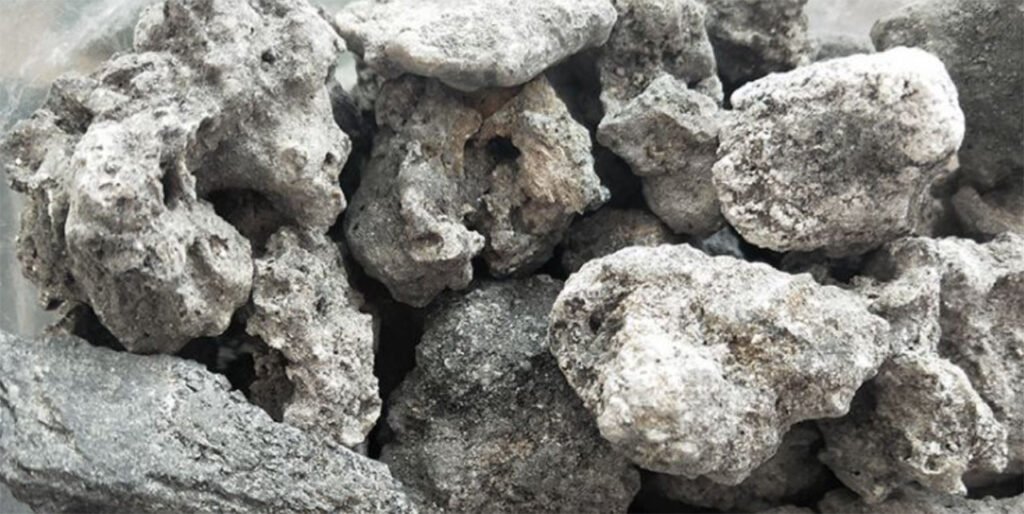
Blast furnace slag is a by-product of the ironmaking process. Blast furnace slag is divided into crystalline slag and glass slag. Crystalline slag is slowly cooled after being discharged from the blast furnace, while glass slag is quenched with water when discharged. Studies have shown that both crystalline slag and glass slag are suitable as supplementary cement raw materials. Use blast furnace slag or basic oxygen furnace slag as a raw material component of long rotary kiln cement clinker. In this process, unground slag is added to the raw meal mix as it sinters well without grinding. Up to 30% slag has been used to produce clinker with acceptable chemical and phase composition. Slag is rich in CaO, SiO2 and Al2O3 and can replace a significant amount of limestone, silica and clay in the raw meal mix.
37% ground slag, lime saturation factor of 98, silica modulus of 2.18 and alumina modulus of 2.2 in the raw meal mix The addition of slag changes the kinetics of clinker formation. Above 1350°C, the reactivity of the raw meal mix is good and the phase formation and distribution of the clinker are normal. Higher temperatures (1450°C) and finer slag particles (90 microns) improve the burnability of the raw meal mix, resulting in clinker with normal mineralogical composition and better clinker phase distribution. Overall, crystalline blast furnace slag is more suitable than glassy slag for cement production, with the potential for improved operations and energy savings.
Use of alternative materials in cement manufacturing
Before use, large, unwanted pieces of iron were removed from the slag by magnetic force. Several feedstocks were prepared by mixing the slag with calcined limestone. In the two best trial burns, blast furnace slag and converter slag were added in amounts of 49% and 8%, and 42% and 27% by mass, respectively; the remainder was calcined lime. The properties of clinker and cement produced with these mixtures were comparable to those produced commercially. Their composition suggests that slag can be used in large quantities, provided that the kiln charge formulation meets the required clinker parameters.
Blast furnace barium manganese slag mixture
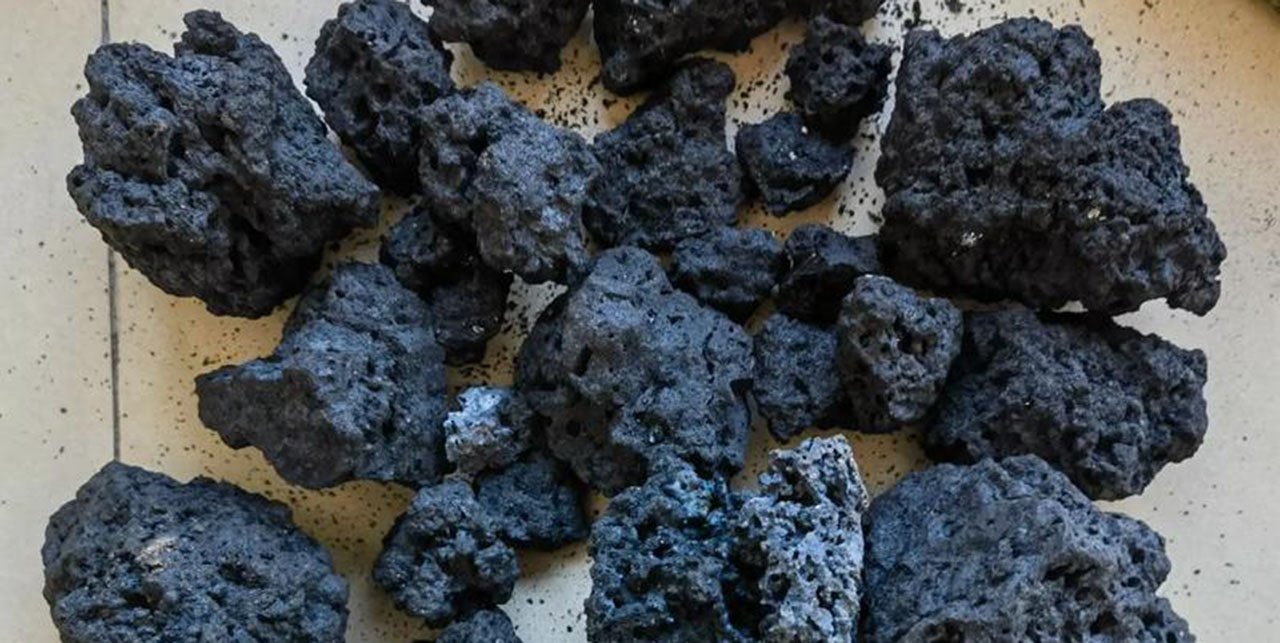
Blast furnace slag (including crystallized slag and glassy slag) is used as raw material to produce cement clinker. However, these slags contain high levels of barium and manganese oxides. Studies have shown that up to 20% of slag can be used in the raw material. The slag increases the reactivity of the raw material and improves the formation of clinker. The presence of barium and manganese oxides changes the crystal structure of wollastonite and increases the compressive strength.
Phosphorus furnace slag
Phosphorus furnace slag is a by-product of phosphate processing. The production of one ton of phosphorus produces about seven tons of slag. This slag is usually rich in calcium silicate, with phosphorus (2.5%) and fluoride (1.5%) as minor components. Granulated phosphorus furnace slag (GPFS) with a content of 2.5% is used in the raw material mixture of the cement production shaft kiln. The use of GPFS improves the quality of the clinker and produces cement with better strength than the control. Since this type of slag can replace limestone, it has the potential to save calcination energy.
Oil shale residues
A Russian cement plant uses lime-rich oil shale residues to produce cement. The residues have a calcium oxide (CaO) content of 34.5% to 48.9% and a silicon dioxide (SiO2) content of 28% to 38.2%. The calcium component used is waste limestone with an organic content of 2% to 6%. The kiln charge is prepared in the mixing chamber of the first stage of the cyclone preheater. Oil shale is added to the calciner or riser at a rate of about 8% of the raw material mix. The residual fuel from the shale provides significant energy savings and the homogeneity of the clinker is good under microscopic examination. 8% of the kiln charge is oil shale added directly to the calcination process, and the oil shale ash is ground together with the clinker to produce a blended cement without the addition of gypsum.
Materials that can replace silicon components
Foundry sand
Foundry sand is a waste product generated by metalworking foundries. It is used to make molds for casting molten metals and alloys. Foundry sand is rich in silica and contains small amounts of clay and molasses. Foundry sand has been used to replace silica in cement kiln raw materials; however, its use depends on the composition of the foundry sand and the target kiln charge mix design.
Foundry sand completely replaces silica in cement raw materials. The produced clinker has a typical type I/II clinker phase distribution, and the addition of foundry sand makes the clinker grinding more difficult. The reason for the poor grindability is the formation of larger alite and belite crystals from coarse quartz in the foundry sand. The later strength of the cement is better than that of the control clinker.
Washed sand
Sand wash liquors are usually rich in silica, with silica contents as high as 75% (mass percentage). The other components are mainly clay. Due to their compatibility of components, these sand wash liquors can be reasonably used as ingredients in cement production raw material mixes.
Rice husk ash
Rice husk ash (RHA) is produced by burning rice fields. This ash is rich in silica and also contains some unburned carbon. Rice husk ash has been successfully used as a kiln feed additive to partially replace high ash coal in a dry kiln process with a suspension preheater. The composition of the rice husk ash used is shown in the table below. In another cement plant, rice husk ash was used as a replacement for sandstone in the raw mix prepared with high-grade limestone. The use of RHA improved the combustibility of the kiln feed and alleviated strength and expansion issues in cement properties. In both cases, rice husk ash also helped save fuel due to the unburned carbon it contains.
| Rice husk ash | |||||
| SiO2 | Al203 | Fe203 | Cao | LOI | Calorific value |
| 88.2 | 3.1 | 2.1 | 0.6 | 4.2 | 15.7 mJ/kg |
Replacing fly ash with 10% RHA saves 5% in fuel costs with no adverse effect on clinker and cement properties. In addition, the compressive strength of the resulting cement is improved. Replacing fly ash with 20% RHA saves about 10% in fuel costs per ton of clinker. However, the quality of the clinker is adversely affected, at least in part due to the significant reduction in alite content, which requires blending with high-quality clinker to produce cement with acceptable properties. Due to the reduction in alite content, the proportions of the blend may not be optimal. RHA is used as a raw material in shaft kilns to produce clinker and cement of acceptable quality. Adding 3% RHA improves the combustibility of the kiln charge, increases productivity by 10%, and provides significant fuel savings. In addition, trace components such as phosphates and sulfates in RHA can improve the melting rate of the clinker through their mineralization, while the low magnesium oxide content can help cement plants using high-magnesium limestone alleviate hardness-related problems.
Ore residues and tailings
Tailings from ore and mineral processing plants are also rich in silica. A study reported the use of copper-nickel tailings and taconite (iron ore) tailings to replace silica in cement raw meal. The copper-nickel tailings were beneficiated before being added to the raw meal mix. The clinker made from this raw meal was Type I/II cement. Its major phases were normally distributed. The strength properties of this cement were superior to those of ordinary commercial Type I cement.
Materials to replace clay components
Catalyst fines
Catalyst fines are rich in silica and alumina. The typical composition of catalyst fines is 50% silica and 40% alumina. 10% of these fines are added to the raw meal to replace most of the silica and alumina (nearly 25%) to produce cement clinker. These mixtures produce mainly Type I/II clinker. The phase distribution of the clinker is similar to that of the control (no catalyst fines added).
Fly ash
Fly ash is produced from coal-fired power plants. Fly ash is rich in silica and alumina and is considered a compatible component of cement raw meal, replacing clay or shale in the original raw materials to a large extent. In general, the composition of fly ash is similar to clay and shale, but the alumina content is usually higher. However, in some cases, the high iron oxide content in fly ash may also be the only source of iron required for the raw meal.
High Carbon Fly Ash
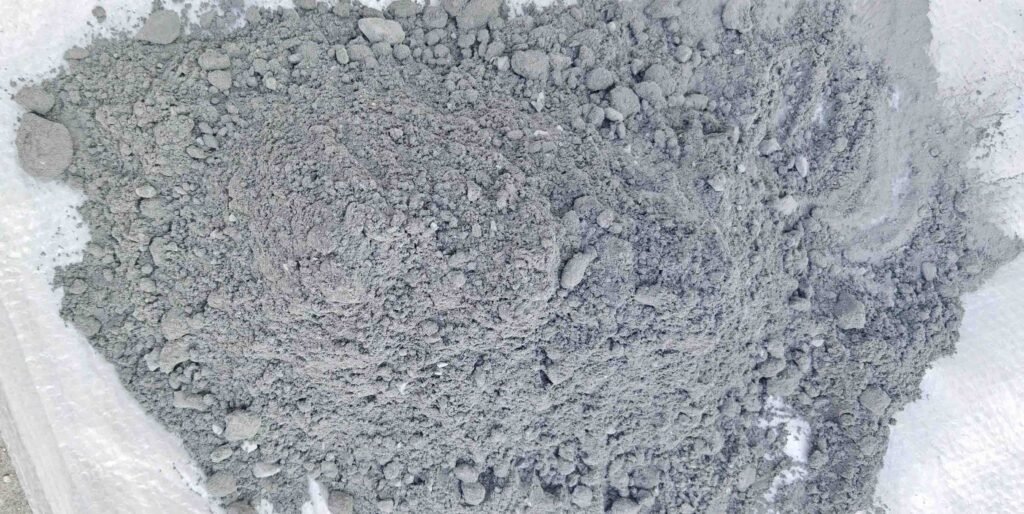
As coal-fired power plants install low NOx burners and take other emission reduction measures, large amounts of high carbon fly ash are expected to be generated. Although handling this fly ash poses difficulties, it has two major benefits if used in cement production. First, fly ash can partially replace raw materials such as shale and clay (as mentioned above); second, the carbon content in fly ash can provide fuel supplementation in the clinker burning process. High carbon fly ash is mixed with raw materials (crushed limestone and a small amount of shale) and ground into raw meal. The composition of the raw meal is based on conventional raw meal. The composition of fly ash and the composition of other raw materials (limestone and shale) limit the replacement rate of fly ash to less than 6%.
Bottom Ash
Bottom ash is also a by-product of coal-fired power plants. Bottom ash usually consists of partially fused coarse particles. Bottom ash is rich in silica, iron and alumina, making it suitable for replacing shale, clay and iron in cement raw materials (as a correction material). In the long-term dry process and preheater cement production process, bottom ash is usually mixed with raw meal before grinding. However, in the wet process, bottom ash and clay are mixed during the clay washing process and added to the raw meal. Bottom ash usually accounts for 2% to 5% of the raw meal and produces clinker with satisfactory C3S, C2S, C3A, C4AF and liquid phase distribution; cement also has acceptable chemical and physical properties.
Pond ash
Pond ash is usually a mixture of fly ash and bottom ash produced by coal-fired power plants. These materials are usually washed and stored in ponds. Utilize pond ash as a reactive component in the raw material mix of the shaft kiln. The use of 4% pond ash performs best during kiln operation. The clinker produced is of acceptable quality and is easier to grind, thus saving grinding energy. This practice is very suitable for high carbon pond ash because fuel is mixed with the raw materials in shaft kiln operation. The use of pond ash also improves clinker quality, energy savings and cement output of the plant.
Conclusion
The raw materials of the cement industry are accelerating the transformation from dependence on traditional natural minerals to diversification and resource utilization. Limestone and clay are still the irreplaceable cornerstones at present, but the application scale of industrial solid waste as alternative raw materials is expanding, becoming a key driving force for the green and low-carbon development of the industry. Since a variety of wastes and by-products are compatible with the composition of cement raw materials, they have great potential for reuse in cement production. However, their use depends largely on their chemical composition and compatibility with the replaced materials in the cement raw material mixture. The cement industry has been using various wastes and by-products as raw materials, while paying attention to their economic, operational and environmental impacts on cement. Cement manufacturing. As mentioned above, it is crucial that the composition of these materials must be compatible with the composition of the raw materials they replace in the cement raw material mixture. The optimization and innovation of cement raw material structure is not only the basis for ensuring the security of the industry supply chain, but also the core path for the cement industry to achieve resource conservation, environmental friendliness, low-carbon circular development, and is crucial to building a sustainable future society.
Past article:
So, after introduce the above raw materails of the cement industry, we would also introduce the sponsor of this article, tongli heavy machinery, tongli is a very dedicated cement equipment manufacturer in China with over 65+ years of experience. Below are some of their products:

